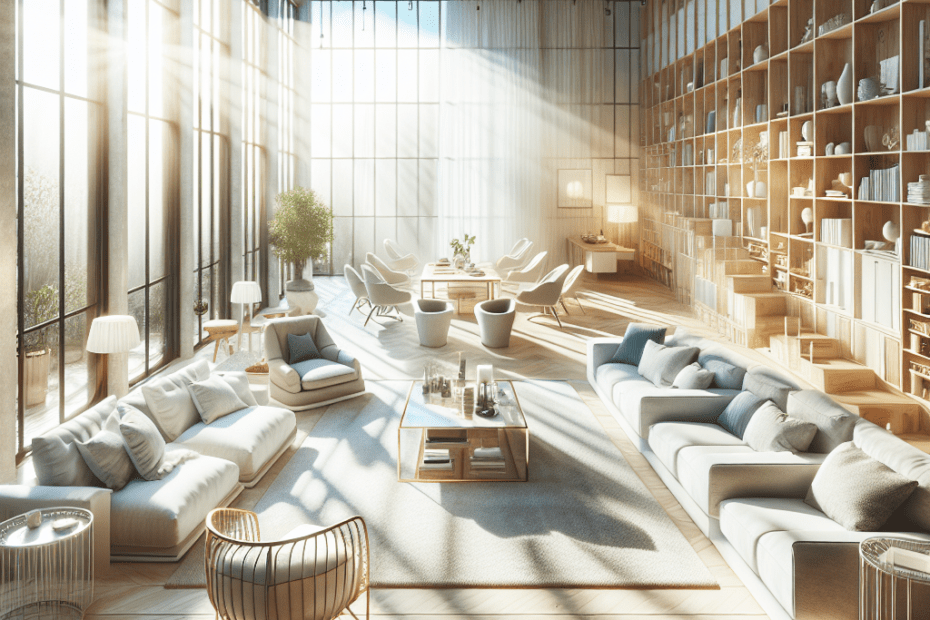“`html
How to Arrange Furniture for Maximum Natural Light
In modern interior design, natural light is not only an essential element for enhancing aesthetics but also plays a crucial role in promoting well-being. Homeowners often find themselves searching for the ideal natural light furniture layout to brighten up their spaces. According to a study by SAGE Research, natural light exposure can boost productivity by up to 40%, making it a significant factor in designing comfortable and efficient spaces.
Understanding the Importance of Natural Light
Natural light does more than illuminate a room; it impacts mood, reduces energy costs, and improves the overall quality of life. Studies suggest that apartments with ample sunlight tend to increase in value by 10-15% compared to those without. This demonstrates the economic and emotional value of getting the furniture layout just right.
Assess Your Space
Before making changes, it’s essential to understand the direction and quantity of natural light your home receives daily. They should note the position and size of windows and consider how light changes throughout the day. By doing so, they’ll be in a better position to strategically place furniture, allowing maximum sunlight into the room.
Key Principles of Natural Light Furniture Layout
- Keep Windows Clear: Position large furniture, like sofas and bookcases, away from windows to avoid blocking sunlight.
- Use Light, Reflective Colors: Opt for lighter shades on walls and furniture to reflect light around the room. Mirrors can also be strategically placed to bounce light.
- Flexible Furniture: Use movable furniture like foldable tables and mobile seating to easily adapt to changing light conditions.
- Layer Lighting: Include a mix of overhead lights, floor lamps, and table lamps to supplement natural light when necessary.
Strategic Furniture Placement
Strategic planning of furniture placement can massively impact the flow of natural light. It is advisable to align seating arrangements perpendicular to windows, ensuring that sunlight can penetrate deeper into the room. Furthermore, using multi-functional furniture can free up floor space, allowing for better light distribution.
Importance of Window Treatments
Window treatments affect the quality of natural light in a room. Sheer curtains or blinds can be optimal, as they diffuse sunlight without completely blocking it. On the other hand, darker, heavy curtains might be better for bedrooms where blocking light during certain times is preferred. The choice of window treatments should reflect the balance between privacy needs and light preferences.
Furniture Layout Techniques
Applying techniques like the Rule of Thirds can help in distributing light uniformly. Divide the room visually into three sections and allocate one for seating, one for functional areas like workspaces, and the last for movement and accessing windows.
Furniture Placement Example
| Room Type | Optimal Furniture Layout |
|---|---|
| Living Room | Arrange sofas perpendicular to windows, with coffee tables placed centrally. Use corner lamps for supplemental lighting. |
| Bedroom | Position the bed across from windows, allowing morning light to enter unobstructed. Use light-filtering blinds for privacy and control. |
| Home Office | Place the desk facing or adjacent to the window for natural task lighting. Avoid direct sun glare on computer screens. |
Key Takeaways
- Maximizing natural light can improve well-being and increase property value.
- The clear space around windows is critical for effective light entry.
- Mirrors and light colors enhance the light’s reach across a room.
- Functional furniture contributes to a flexible, light-filled environment.
- Window treatments should balance between privacy and light necessities.
Frequently Asked Questions (FAQ)
Q1: How does furniture color impact natural light?
Light-colored furniture reflects more sunlight, making rooms appear brighter and more spacious.
Q2: Can they use heavy drapes in rooms with minimal light?
While heavy drapes provide privacy, they also block much of the natural light. Consider pairing them with lighter sheers for flexibility.
Q3: How do mirrors help in a natural light furniture layout?
Mirrors reflect natural light, bouncing it off to illuminate darker areas of a room, maximizing the sense of space.
Q4: What are some tips for dealing with an overabundance of natural light?
In rooms with excessive sunlight, using sheer curtains or blinds can soften incoming light, aiding in comfort and privacy.
Q5: How does technology assist in maximizing natural light?
Smart window films and automated blinds adjust based on sunlight, offering optimal light levels throughout the day.
Implementing these strategies will not only enhance the aesthetics but can lead to a healthier and more energy-efficient home environment.
“`
